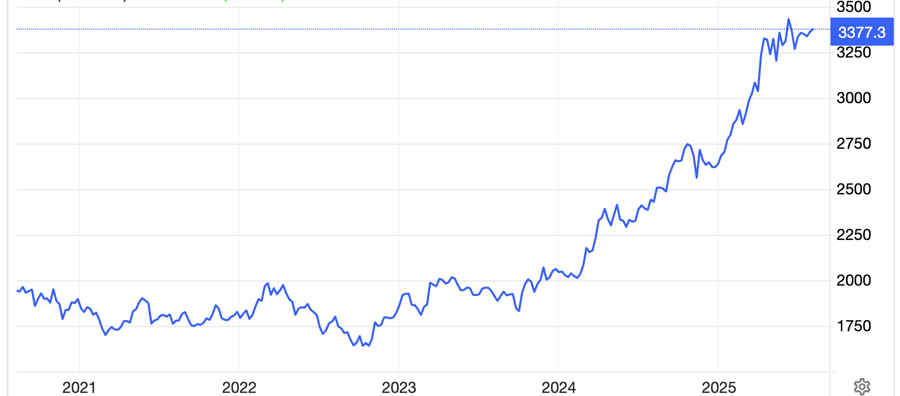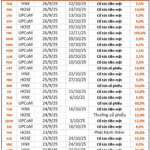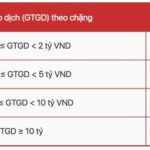Global gold prices rose for the third consecutive session during the US trading hours last night and maintained an upward trend in the Asian market earlier this morning (August 5th) as investors anticipated the Federal Reserve to cut interest rates next month. The giant SPDR Gold Trust fund bought more gold in the first session of the week after net selling last week.
At 6:50 am Vietnam time, the spot gold price in the Asian market rose by $2.9/oz compared to the closing price on Monday in New York, equivalent to a 0.09% increase, trading at $3,378.2/oz according to data from the Kitco exchange. Converted according to Vietcombank’s selling rate, this price is equivalent to VND 107.3 million/troy ounce, up VND 700,000/troy ounce from yesterday morning.
At the same time, Vietcombank quoted the USD at VND 25,980 (buying) and VND 26,370 (selling), down VND 20 at each price threshold compared to yesterday morning.
In the US session last night, spot gold closed at $3,375.3/oz, up $11.8/oz from last week’s closing price, equivalent to a 0.35% gain.
Gold prices have been on the rise since Friday, after the US Labor Department released a weaker-than-expected non-farm payrolls report for July and significantly revised down the new hires data for May-June. Following the report’s publication, President Trump dismissed the head of the Bureau of Labor Statistics (BLS) and announced that he would appoint a new person to this position in a few days.
The disappointing employment data has boosted expectations for a Fed rate cut in September, after such expectations had diminished due to the Fed’s and Chairman Jerome Powell’s hawkish stance in the monetary policy meeting last week. According to data from the FedWatch Tool on the CME exchange, traders are betting on an 84% chance of a Fed rate cut in the September meeting, up from 60% a week ago. The market also believes the Fed will cut rates at least twice this year, by 0.25 percentage points each time.
“The likelihood of a Fed rate cut in September has increased, and even more so for the December meeting. Along with this is the pressure of rising inflation. I think all of these factors are quite favorable for gold prices,” said Daniel Pavilonis, a strategist at RJO Futures, in an interview with Reuters.

Data released by the US Commerce Department last week showed that the Personal Consumption Expenditures Price Index (PCE) – the Fed’s preferred inflation measure – rose 0.3% in June after a 0.2% increase in May. The acceleration in inflation indicates that tariffs are starting to affect the prices of some goods in the US.
Gold is a non-interest-bearing asset and is considered a top hedge against inflation. Therefore, a low-interest-rate environment coupled with high inflation tends to benefit gold prices.
A weaker US dollar is also providing support for gold prices. The Dollar Index, which measures the strength of the greenback, closed Monday’s session at 98.78, slightly higher than the previous session’s level. But this morning, the index fell back to near the 98.6 level. Over the past five sessions, the Dollar Index has dropped nearly 0.3% – according to data from MarketWatch.
The world’s largest gold ETF, SPDR Gold Trust, bought a net 1.7 tons of gold in Monday’s session, raising its holdings to 954.8 tons – according to data from the fund’s website. Last week, the fund sold a net 1.4 tons of gold.
In a recently published report, Citi raised its three-month gold price forecast to $3,500/oz, up from $3,300/oz in June. “Concerns about economic growth and inflation related to US tariffs will remain elevated in the second half of this year. Along with a weaker US dollar, this will push gold prices higher, setting new records,” the report said.
Citi also raised the predicted gold price range for the next three months to $3,300-3,600/oz from $3,100-3,500/oz previously.
Will Interest and Exchange Rates Cool Off by Year-End?
The Fed’s decision to maintain the USD interest rate at 4.5% could result in the USD/VND exchange rate remaining elevated around 26,400/26,500 in Q3, with a slight decrease towards the year-end. This may also curb commercial banks’ ability to significantly lower deposit and lending rates.
The CPI for the first seven months is estimated to increase by 3.2-3.3%.
The Ministry of Finance reports that the consumer price index (CPI) for the first seven months of the year is estimated to have increased by 3.2-3.3% compared to the same period last year. This is an appropriate level that supports economic growth, especially as resources are being focused on achieving the highest possible economic expansion. Vietnam’s inflation is being carefully managed within the target range set by the National Assembly and the Government of 4.5-5%, contributing to macroeconomic stability.
The Alluring Appeal of Bank Deposits: What’s Keeping Funds from Venturing Out?
Despite the low savings interest rates, banks continue to attract massive cash inflows. This phenomenon can be attributed to a combination of factors, including a cautious mindset, deep-rooted trust in the banking system, and traditional savings habits, which together create a strong pull for idle funds to remain within the confines of these financial institutions.
“Vietnam’s Central Bank Meets With Commercial Banks to Discuss Interest Rates”
The State Bank of Vietnam (SBV) has instructed credit institutions to follow the directives of the Government, the Prime Minister, and the SBV itself, with a key focus on maintaining stability in deposit interest rates. Institutions are also encouraged to further reduce operating expenses, embrace digital transformation, and be prepared to share a portion of their profits to lower lending rates.








































